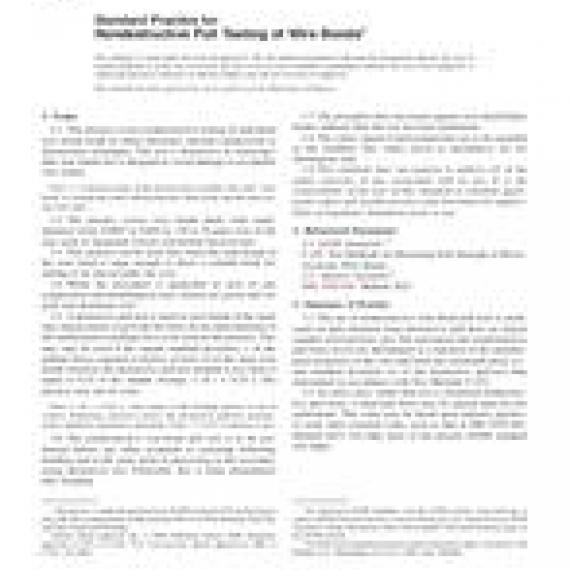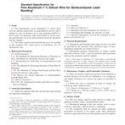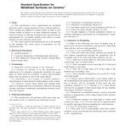-
 1xRTCA DO-337
$27.00
1xRTCA DO-337
$27.00 -
 1xAS 3580.7.1:2023
$26.80
1xAS 3580.7.1:2023
$26.80 -
 1xRTCA DO-335
$78.75
1xRTCA DO-335
$78.75 -
 1xRTCA DO-224C
$202.50
1xRTCA DO-224C
$202.50 -
 1xRTCA DO-289 Change 1
$33.75
1xRTCA DO-289 Change 1
$33.75 -
 1xASTM E2112-23
$51.75
1xASTM E2112-23
$51.75 -
 1xAS ISO 3452.1:2020
$35.26
1xAS ISO 3452.1:2020
$35.26 -
 1xBS PD ISO/TS 23973:2020
$148.59
1xBS PD ISO/TS 23973:2020
$148.59
No products
ASTM F458-06
ASTM F458-06 Standard Practice for Nondestructive Pull Testing of Wire Bonds
standard by ASTM International, 01/01/2006
Full Description
1.1 This practice covers nondestructive testing of individual wire bonds made by either ultrasonic, thermal compression or thermosonic techniques. The test is destructive to nonacceptable wire bonds but is designed to avoid damage to acceptable wire bonds. Note 1Common usage at the present time considers the term "wire bond" to include the entire interconnection: both welds and the intervening wire span.
1.2 The practice covers wire bonds made with small-diameter (from 0.0007 to 0.003-in. (18 to 76-m)) wire of the type used in integrated circuits and hybrid microcircuits.
1.3 This practice can be used only when the loop height of the wire bond is large enough to allow a suitable hook for pulling to be placed under the wire.
1.4 While the procedure is applicable to wire of any composition and metallurgical state, criteria are given only for gold and aluminum wire.
1.5 A destructive pull test is used on wire bonds of the same type and geometry to provide the basis for the determination of the nondestructive pulling force to be used in this practice. This may only be used if the sample standard deviation, s, of the pulling forces required to destroy at least 25 of the same wire bonds tested by the destructive pull-test method is less than or equal to 0.25 of the sample average, x. If s > 0.25 x, this practice may not be used. Note 2If s > 0.25 x, some aspect of the bonding process is out of control. Following corrective action, the destructive pull-test measurements should be repeated to determine if the s 0.25 xcriterion is met.
1.6 The nondestructive wire-bond pull test is to be performed before any other treatment or screening following bonding and at the same point in processing as the accompanying destructive test. Preferably, this is done immediately after bonding.
1.7 The procedure does not ensure against wire-bond failure modes induced after the test has been performed.
1.8 The values stated in inch-pound units are to be regarded as the standard. The values given in parentheses are for information only.
This standard does not purport to address all of the safety concerns, if any, associated with its use. It is the responsibility of the user of this standard to establish appropriate safety and health practices and determine the applicability of regulatory limitations prior to use.


































